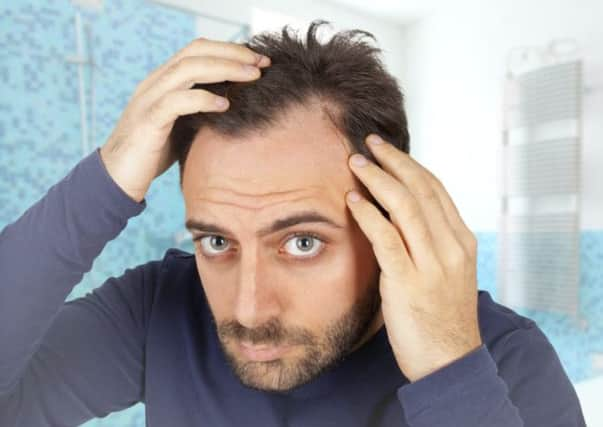Hopes raised of cure for baldness


Previous research has identified signals from the skin that help prompt new phases of hair growth, but how the different types of cells in the skin activate hair growth has continued to puzzle scientists.
Now researchers at the Spanish National Cancer Research Centre (CNIO) have discovered an unexpected link between the body’s natural defence system and skin regeneration.
Advertisement
Hide AdAdvertisement
Hide AdThey found macrophages –cells from the immune system that are in charge of devouring invading pathogens – are involved.
The study, which was published in the journal, PLOS Biology, suggests that macrophages induce hair growth by surrounding and activating cells in the skin that have regenerative capacity, called stem cells.
They believe the discovery could influence potential applications in tissue regeneration, ageing and cancer.
CONNECT WITH THE SCOTSMAN
• Subscribe to our daily newsletter (requires registration) and get the latest news, sport and business headlines delivered to your inbox every morning
One of the researchers, Doctor Mirna Perez-Moreno, said: “We have discovered that macrophages, cells whose main function is traditionally attributed to fighting infections and wound repair, are also involved in the activation of hair-follicle stem cells in non-inflamed skin.”
The findings emerged from an observation by Dr Perez-Moreno while she was working on another research project. The mice she was working with started to regrow hair when they were given anti-inflammatory drugs.
Curious as to whether close communication between stem cells and immune cells could explain the observation, her lab began to test different types of cells involved in the body’s defence system for a role in hair growth. They found that when skin cells are dormant, a fraction of macrophages die naturally due to a normal process called apoptosis. However, the dying and surviving cells activated nearby stem cells and hair began to grow again.
Although the study was carried out in mice, researchers believe their discovery may enable the development of new treatments for hair growth in humans.
Advertisement
Hide AdAdvertisement
Hide AdDr Perez-Moreno added that the research is an effort to understand how modifying the environment that surrounds adult skin stem cells can regulate their regenerative capabilities.
Hair transplants and ‘weaves’ – where new hair is added to existing strands – have become a staple of the modern male celebrity and sports stars. Those who have had treatment include Wayne Rooney, Jude Law, Louis Walsh and the former Italian prime minister, Silvio Berlusconi.
There are several techniques available for the harvesting of hair follicles. Regardless of which donor harvesting technique is employed, however, proper extraction of the hair follicle is paramount to ensure the viability of the transplanted hair and avoid transection, the cutting of the hair shaft from the hair follicle.
Hair follicles grow at a slight angle to the skin’s surface, which means that regardless of technique transplant tissue must be removed with a corresponding angle and not perpendicular to the surface.
Strip harvesting is the most common technique for removing hair and follicles from a donor site. The surgeon harvests a strip of skin from the posterior scalp, in an area of good hair growth.
SCOTSMAN TABLET AND IPHONE APPS